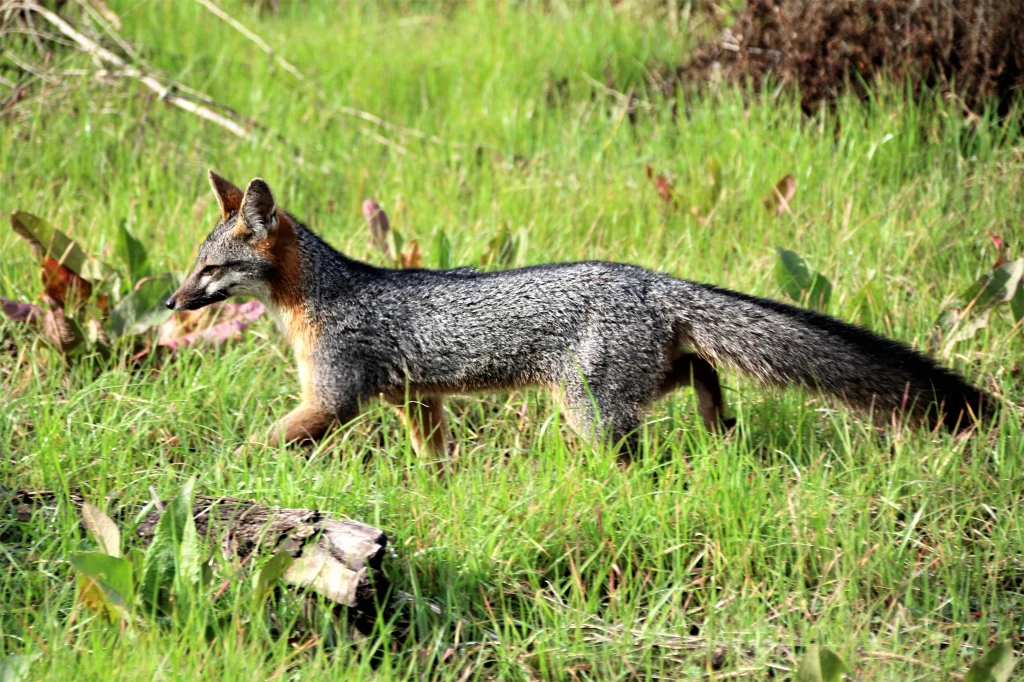For this article, I will not use the actual names of the people involved. However, the events that transpired are all true.
Saturday, 9 June 2018 10:18 AM – First email sent by Barbara who works at Facebook – “Baby gray foxes were born under the deck of what’s called the Town Square which is an open courtyard with twenty redwood trees and a wooden deck located on the new portion of the Facebook campus.” Not only the new portion of the campus but this family of gray foxes lived on the garden roof, high above the parking lots and expressway below. The request began by asking who they should contact to have the pups removed from Town Square. In my reply, I pointed out that the pups would have to be trapped and that as such they would be traumatized. Then the separation of the pups from their parents would increase their trauma and we didn’t want to do that.
On August 8, 2018, we nailed down the day and time – August 10 at 10 AM – that I would meet with a team of three Facebook employees and the two women who designed and guided the planting of the rooftop garden. We would then take a tour of the 14.5-acre rooftop garden where the foxes live. In the process, I advised the Facebook staff on best practices under these circumstances.
I met Barbara in one of the lobbies where visitors are cleared through security. She asked, “Shall we take the stairs or the elevator?” I chose the elevator. When the door opened and we stepped out into the rooftop garden, I was stunned by the mature trees, the bushes, the flowers, all a garden masterpiece. I told Barbara, “Wow, this is ideal gray fox territory. Exactly what they love; all the bushes and trees.” I went on to explain the difference between a gray fox and red fox habitat and that I called the gray foxes that I studied, the “little bush-dogs” because they prefer living in the brush out of sight in contrast with the red foxes that like open fields.
There we met with Jeff the gardening supervisor and Mike the facilities manager. We chatted for a bit but then began our walk; they showing me where the pups were first seen, giving me information about the environment, asking questions. A few minutes into our walk we met with Jenny and Marsha, the two young women who had designed the garden setting and continued to extend the rooftop garden over onto a building that was still under construction.
Someone mentioned that people who arrived at work early in the morning saw foxes crossing through the bushes with rodents in their mouths. I pointed out that in the early days of the pup’s lives, that the parents hunt and bring back to the natal den the food. Later, the pups would know how to forage for and catch their own food. The question became, “Are there rodents making their home up here or are the foxes getting down from off the roof, hunting, then bringing the rodents back up to feed to their three pups.” No one knew.
Mike asked, “How do you think the foxes got up here?”
Of course, I had no idea but I pointed out that they had to have been up there before April in order to find a suitable place for their natal den under the Town Square deck and give birth. No one knew for sure but Jeff thought that maybe since in March and into April that whole area was under construction and that there were very tall ladders leaning up against the outer walls that maybe they climbed the ladders. At first glance, most would say that such a feat was impossible, but not so for gray foxes can not only climb trees but from first-hand experience I had seen them climb ladders.
The team showed me where the foxes dug up a patch of dirt in the garden. They had learned that the hole filled with water and there they could get a drink. Barbara asked, “How did they discover that?” I replied, “They smelled the water and that told them where to dig.” The solution then was to put bowls out that contained a drip system, keeping the water fresh.
Moving forward, I pointed out that we need to find out whether the foxes are trapped on the Facebook roof, or whether they have a way to travel down to the ground. If trapped up there with three pups of unknown sex, and the inability to get to the ground, the rooftop foxes are in serious trouble for they will inbreed. That would result in the eventual death of the foxes in the rooftop garden.
We decided that the way to find out if they can go to ground would be to place trail cameras at strategic fire escapes to see if they are being used to travel in between. There’s still a lot of work to do up there, but in the end, no matter what, this is the most unique gray fox situation I have ever encountered.
Gray Foxes General Health
To date, no gray foxes at the Palo Alto baylands to date 8/29/2018.
Total Numbers of Gray Foxes in the Palo Alto Baylands Nature Preserve
None




